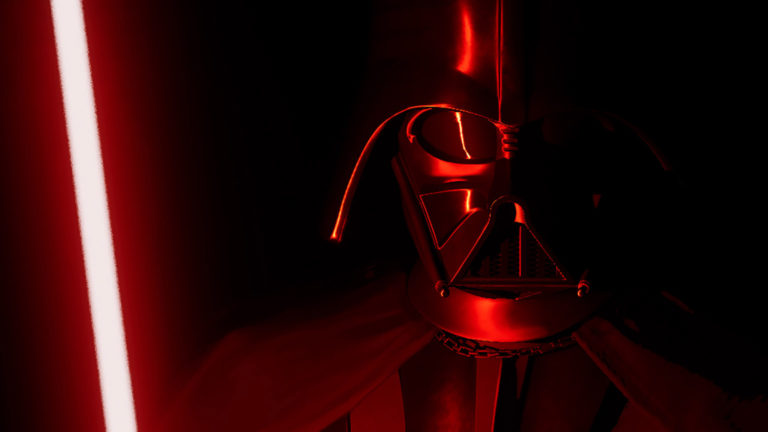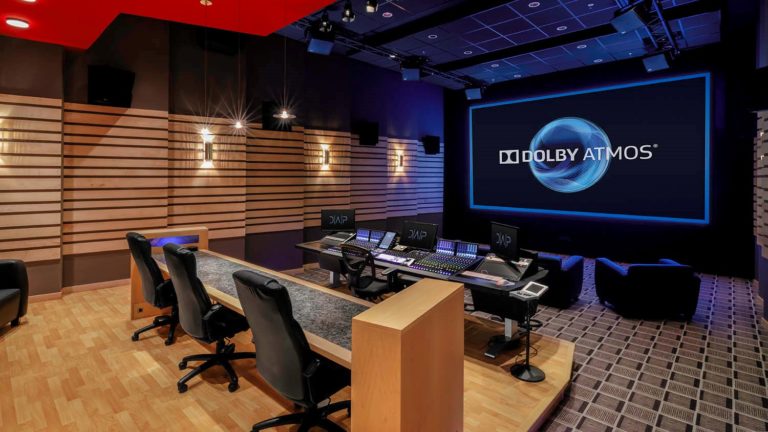Instruments and Exotic Animals Form An Organic Sonic Base for The Chronicles of Riddick



reveals a lot when he "orchestrates" these sound elements for film.
"Sound effects, sound design, even dialog and ADR – it's all music, and
you play it like an arrangement," says Gershin. "In the mix, you
constantly have to make choices as to whether this is a dialog moment
or a sound design moment. So you definitely want the sound effects and
design elements to be as compelling to the narrative as dialog or
music, and you want a certain harmony between them."
Gershin had that harmony in mind when he first contemplated the sound
design and effects work for his latest effort, director David Twohy’s
SF action-adventure The Chronicles of Riddick, over
a year ago. (It marks Gershin’s second collaboration with Twohy,
following the director’s previous film, Below.) That lengthy gestation
period took Gershin back to his roots as a guitarist and synthesizer
programmer. Working at his studio at Soundelux, Gershin took electric
guitars and a Marshall amplifier and began trying to make them sound
like anything but guitars.
says. "The guiding principle behind the development of the movie’s
sound design and effects was to create kind of a parallel but still
organic universe. And I wanted the sounds to be as original as
possible, something we haven’t heard before." Thus, Gershin loosened
the strings on the guitars, fed them into the amplifier and processed
them heavily using an Eventide Orville. "I literally mangled them,
using really bizarre pitch-bending and filtering. The effect is like
nothing you’ve ever heard, but there’s still some hint of musicality to
the sounds."


weaponry, Gershin enlisted the help of long-time friend and musician
Rob Arbittier, owner of music company Noisy Neighbors. Arbittier is
known for a collection of analog synthesizers that approaches museum
status, including several ancient and exotic Moog synthesizers. Gershin
and colleague Peter Zinda worked on the weaponry sounds using the
synthesizers, emphasizing the analog synths’ ability to generate
powerful low-frequency sounds. "The gravity weapons seemed to want
sounds that moved air, just as the weapons moved the people and things
they hit," he reasons. "We chose sound combinations with a lot of low
end and put a lot of the information into the subs." There’s a
subliminal point here: Gershin points out that the lower-frequency
weapons sounds generally indicate the bad guys. In other words, the
whiter the hat, the higher the weapons’ sounds.
a variety of vocal processors, including the Native Instruments
Vokator. Many of the spaceship sounds, for instance, are vocalizations.
Another variation on the theme was to take pieces of hip-hop recordings
and beats, coaxing the low frequencies out of them and using those
sounds as sonic frosting on the ship and weapons sounds. In fact,
The Chronicles of Riddick may well set new standards
for the amount of low-frequency information in a film soundtrack. "This
is going to be an interesting test for the subs," he says.

Gershin and Zinda booked time at animal specialist Steve Martin’s
compound in Frazier Park, CA, auditioning and then recording various
exotic animals. Gershin, using a Neumann 191 microphone, and Zinda,
with a Sennheiser 461 shotgun, recorded in the field to DAT rather than
in a studio setting. "A studio is too dead-sounding, we thought," he
recalls. "It compresses the dynamics of animal sounds. And Steve Martin
has specially made harnesses that are noiseless when the animals move
in them. We purposely chose feeding time, since the animals would be
more naturally vocal around that time of day." Animals including a
Bengal Tiger, a black leopard and several types of wolves not only
contributed to the voices of specific characters, such as the Hell
Hound, but also made up an ominously cacophonous sonic backdrop.
availability of CG elements, working off sketches and extended
conceptual conversations with Twohy, meaning the audio
characterizations preceded their visual manifestations. As the sound
design became more complex, Gershin assigned specific aspects to other
sound designers: Peter Zinda handled the weapons sounds, Ann Scibelli
worked on the Hell Hound, Bryan Bowen created sounds for fight scenes,
and John Title came up with sound design for a planet of fire. The size
of the audio crew grew as deadlines approached, and Gershin didn’t
receive final CG designs until a week before the first temp dub was to
be made.
of elements to be arranged and orchestrated as a single piece. That
includes elements such as the music score and the extensive ADR work.
"Much of the dialog had to be replaced," he says, noting the amount of
ambient noise produced on the large shooting stages. "It’s an issue for
sound design because you don’t want differences in the ambience behind
the dialog to disrupt the flow of the soundscape from scene to scene."


dialog/ADR supervisor Hugh Waddell ( Titanic, The Thin Red
Line). With polystyrene sets and neoprene costumes squeaking
and groaning on the interior sets, plus the hiss of steam and smoke
generators, Waddell estimates that 80 percent of Riddick’s dialog will
have been looped. " Scott was careful about carving out a frequency
range for the dialog," Waddell explains. "When necessary, he would
clear the effects out of the center channel and let them swim in the
surrounds. That kept the sound design consistent but let the dialog
come through at critical points."
Gershin states. "When Lord Marshal walks across the room, the footsteps
have to be very authoritative. They have to have the right attitude.
The ADR and Foley have to be consistent with the rest of the sound
design."
willing to listen," returns the compliment, citing Gershin’s
willingness to consult with him while developing sound design. This is
the fourth film they’ve worked on together, and Revell says they have
developed a sense of what each one will do in given circumstances.
"There’s a scene in which Riddick is pursued by creatures called
Lensors, who use these peculiar night-vision scopes," Revell says. "I
know it’s an important point for Scott’s effects, yet I need to get a
scare into the music, which I created with a high string cluster. So I
made sure to record it on a separate track, in case it doesn’t quite
work against the effects and I can take it out and record something
else."
elements from slamming into each other- has developed in response to
the sheer breadth of sound elements that routinely go into feature
films. "The potential for a frequency-related train wreck has
definitely increased," Revell notes.
Mantegna and Rick Klein, was equally complex. Dialog and effects took
up the better part of six 32-output Pro Tools systems. Gershin, Wadell
and Zinda each added one more Pro Tools rig, and another 32-channel
utility system made it an even 10 Pro Tools systems.
(Riddick marks the first time a feature film was
mixed completely to Pro Tools at Universal.) In addition, Gershin had
network access to his sound effects on Soundelux servers at the mix
stage. "We can download 1.5 GB a minute through that pipe," he
estimates. "And we’re going to need all of that bandwidth on this film."

Did you enjoy this article? Sign up to receive the StudioDaily Fix eletter containing the latest stories, including news, videos, interviews, reviews and more.










Great article! As a sound designer, I dream of the possibility to one day work at Soundelux or any other company. I am always amazed and awed by how much effort and cooperation is needed for feature films.